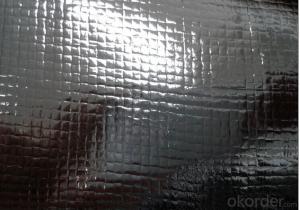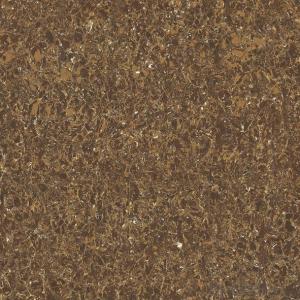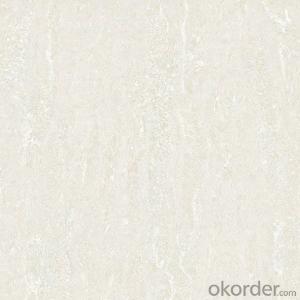Stainless Steel Heat Color
Stainless Steel Heat Color Related Searches
Best Paint For Stainless Steel Blanket Insulation For Steel Buildings Primer For Galvanized Steel Foam Filter For Stainless Steel H S Code For Stainless Steel Surface Grinding Wheels For Stainless Steel Surface Grinding Wheels For Hardened Steel Hole Saw For Stainless Steel Paint For Stainless Steel Stainless Steel For BbqHot Searches
Used Foam Board Insulation For Sale Magnesium Oxide Board For Sale Hdf Board For Sale sintra board for sale High Mast Light Price List Solar High Mast Light Specification Gypsum Board Price Per Sheet In India High Mast Light Specification High Density Mdf Board Suppliers 5 8 Type X Gypsum Board Price Stage Light Price Solar Inverter Fault Light Polyurethane Insulation Board Price Mdf Price Per Sheet Pre Laminated Board Price List 4Mm Mdf Sheet 1220X2440Mm Price Led Light Manufacturers Solar Inverter Pcb Board 6Mm Mdf Board Price 18Mm Ply Board PriceStainless Steel Heat Color Supplier & Manufacturer from China
Okorder.com is a professional Stainless Steel Heat Color supplier & manufacturer, offers integrated one-stop services including real-time quoting and online cargo tracking. We are funded by CNBM Group, a Fortune 500 enterprise and the largest Stainless Steel Heat Color firm in China.Hot Products
FAQ
- Stainless steel pipes and carbon steel pipes are both widely used in various industries and applications, but they differ in terms of their composition, strength, durability, and corrosion resistance. One of the key differences between stainless steel pipes and carbon steel pipes lies in their composition. Stainless steel pipes are made from an alloy of iron with a minimum of 10.5% chromium content, which provides excellent corrosion resistance. On the other hand, carbon steel pipes are primarily made from iron and carbon, with lower amounts of other elements. In terms of strength, carbon steel pipes are generally stronger and more rigid than stainless steel pipes. This characteristic makes carbon steel pipes suitable for applications that require high pressure or heavy load-bearing capacity. Stainless steel pipes, although not as strong as carbon steel pipes, still possess good strength and are suitable for various applications where corrosion resistance is a priority. When it comes to corrosion resistance, stainless steel pipes outperform carbon steel pipes. The chromium content in stainless steel forms a protective layer on the surface, known as the passive film, which prevents corrosion and rusting. This makes stainless steel pipes ideal for applications in corrosive environments, such as chemical processing, marine, and offshore industries. Carbon steel pipes, on the other hand, are more prone to corrosion and require additional protective coatings or treatments to enhance their resistance to corrosion. Durability is another important factor to consider when comparing stainless steel pipes to carbon steel pipes. Stainless steel pipes are known for their long lifespan and resistance to wear and tear, making them a cost-effective choice in the long run. Carbon steel pipes, while durable, may require more maintenance and regular inspections to prevent corrosion and degradation. In conclusion, stainless steel pipes offer superior corrosion resistance, making them more suitable for applications in corrosive environments. Carbon steel pipes, on the other hand, are stronger and more rigid, making them suitable for high-pressure applications. The choice between stainless steel and carbon steel pipes ultimately depends on the specific requirements of the application, including the level of corrosion resistance, strength, and durability needed.
- Yes, stainless steel pipes can be used in the food processing industry. Stainless steel is a popular choice for use in food processing due to its many beneficial properties. Firstly, stainless steel is resistant to corrosion, which is essential in an environment where food and liquids are constantly being processed and handled. Additionally, stainless steel is easy to clean and maintain, which is crucial in food processing to ensure hygiene and prevent contamination. Stainless steel pipes also have high strength and durability, allowing them to withstand the demanding conditions of the food processing industry. Moreover, stainless steel is non-reactive, meaning it does not interact chemically with food or ingredients, ensuring that the quality and taste of the processed products are not affected. Overall, stainless steel pipes are an excellent choice for the food processing industry due to their corrosion resistance, cleanliness, durability, and non-reactive properties.
- Yes, stainless steel pipes can be used for underground installations. Stainless steel is highly resistant to corrosion and can withstand harsh underground environments, making it a suitable choice for applications that require durability and longevity. Additionally, stainless steel pipes have excellent strength-to-weight ratio and are known for their high resistance to temperature variations, making them a reliable option for underground installations.
- When it comes to joining stainless steel pipes together, one has various methods to choose from based on their specific requirements and application. The most commonly used and widely preferred method is welding. This involves the application of heat to melt the material, resulting in a strong and durable bond. Different welding techniques, including TIG (Tungsten Inert Gas) or MIG (Metal Inert Gas) welding, can be employed for this purpose. Compression fittings are another popular choice, particularly in plumbing applications. These fittings consist of a compression nut and a ferrule that are tightened onto the pipe, ensuring a secure and leak-proof connection. In situations where a more robust connection is necessary, such as in high-pressure or high-temperature applications, flanges are utilized. This involves bolting flanges at the ends of two stainless steel pipes, creating a tight and reliable connection. Threaded connections are also an option, where one end of the pipe is threaded, and the other end is fitted with a threaded pipe fitting, such as a union or nipple. This method is often employed for smaller diameter pipes or situations that require frequent disassembly. For temporary or frequently disassembled connections, clamps and couplings are used. These devices clamp around the pipes and are tightened using bolts or other mechanisms, providing a secure connection. Considering the specific requirements, such as pressure, temperature, and corrosion resistance, is crucial when selecting the appropriate method to join stainless steel pipes. Seeking advice from professionals or consulting industry standards and guidelines can ensure a successful and reliable pipe connection.
- The maximum pressure rating for stainless steel pipes can vary depending on several factors such as the grade of stainless steel, the diameter and wall thickness of the pipe, and the specific application or industry requirements. However, stainless steel pipes are known for their high strength and corrosion resistance, making them suitable for high-pressure applications. In general, stainless steel pipes can have maximum pressure ratings ranging from a few hundred psi (pounds per square inch) to several thousand psi. It is crucial to consult the appropriate industry standards, codes, and specifications or consult with a qualified engineer or manufacturer to determine the specific maximum pressure rating for a particular stainless steel pipe in a given application.
- To prevent leakage in stainless steel pipes, there are several measures that can be taken: 1. Proper installation: Ensure that the stainless steel pipes are installed correctly by trained professionals who have expertise in working with stainless steel. This includes using appropriate fittings, connectors, and seals to ensure a tight and secure connection. 2. Regular inspections: Conduct routine inspections to identify any signs of leakage such as corrosion, cracks, or loose fittings. This allows for proactive maintenance and repairs before a major leak occurs. 3. Use high-quality materials: Choose stainless steel pipes that are made from high-grade materials and comply with industry standards. Low-quality materials or substandard manufacturing can lead to weak spots and increased risk of leakage. 4. Proper sealing: Use effective sealing methods such as gaskets, o-rings, or thread sealants to create a tight seal between pipe joints. This prevents any potential leakage points where fluids or gases can escape. 5. Pressure testing: Conduct pressure tests on the stainless steel pipes to ensure their integrity before they are put into operation. This helps identify any weaknesses or leaks that may have occurred during installation. 6. Regular maintenance: Implement a regular maintenance schedule to inspect and maintain stainless steel pipes. This includes checking for signs of corrosion, replacing worn-out seals or gaskets, and tightening fittings as necessary. 7. Avoid over-tightening: While it is important to ensure a secure connection, over-tightening fittings can lead to stress and damage to the pipe, which can result in leaks. Follow the manufacturer's guidelines for proper tightening torque. 8. Proper pipe support: Ensure that stainless steel pipes are adequately supported and secured to prevent stress or movement that can cause leaks. This includes using appropriate hangers, clamps, or brackets suitable for stainless steel pipes. By following these preventive measures, the likelihood of leakage in stainless steel pipes can be greatly reduced, ensuring the long-term integrity and reliability of the piping system.
- Different applications and requirements necessitate a variety of sizes and dimensions for stainless steel pipes. The pipes' nominal pipe size (NPS), which denotes their inner diameter, is typically used to classify the common sizes and dimensions. Stainless steel pipes commonly come in sizes ranging from 1/8 inch to 36 inches in diameter. These sizes are widely used in industries like construction, oil and gas, chemical processing, and plumbing. However, it is also possible to have stainless steel pipes customized to meet specific needs. In terms of dimensions, stainless steel pipes usually adhere to standard schedules that specify their wall thickness. The most prevalent schedules are Schedule 5, Schedule 10, Schedule 40, and Schedule 80. Each schedule has a varying wall thickness, enabling different levels of pressure and strength. Furthermore, stainless steel pipes are available in various lengths, ranging from 20 feet to custom lengths based on the manufacturer and application. The standard length for stainless steel pipes is often 6 meters or 20 feet, but shorter or longer lengths can be requested or cut to fit specific project requirements. It is crucial to consider other factors when selecting stainless steel pipes, such as material grade, corrosion resistance, temperature and pressure ratings, and adherence to industry standards. To ensure the correct choice of stainless steel pipes for a specific application, it is advisable to consult with a professional or refer to the appropriate standards and specifications.
- 904L and 316 stainless steel are commonly utilized materials in various industries for pipe manufacturing. The distinction between these two grades lies in their composition, properties, and applications. 1. Composition: - In terms of composition, 904L stainless steel contains elevated levels of chromium, nickel, and molybdenum, along with copper. It possesses a higher alloy content compared to 316 stainless steel. - On the other hand, 316 stainless steel, also referred to as marine grade stainless steel, contains significant amounts of chromium, nickel, and molybdenum. However, it does not include copper in its composition. 2. Corrosion Resistance: - In terms of corrosion resistance, 904L stainless steel exhibits remarkable resistance, particularly in aggressive environments like seawater and acidic conditions. Its high content of chromium, nickel, and molybdenum ensures superior protection against pitting and crevice corrosion. - Similarly, 316 stainless steel offers excellent corrosion resistance, especially in marine and chloride-rich environments. However, it is not as resistant to corrosion as 904L stainless steel. 3. Strength and Durability: - When considering strength and durability, 904L stainless steel demonstrates higher levels compared to 316 stainless steel due to its increased content of nickel and molybdenum. It can endure higher pressures and temperatures, making it suitable for applications in extreme conditions. - On the other hand, while 316 stainless steel possesses good strength and durability, it falls slightly behind 904L stainless steel in this regard. 4. Applications: - 904L stainless steel pipes find common usage in industries such as petrochemical, chemical processing, oil and gas, and marine applications. They prove ideal for environments with high chloride levels and acidic conditions. - Conversely, 316 stainless steel pipes are widely employed across various industries, including food processing, pharmaceuticals, architecture, and marine applications. They are suitable for general-purpose applications where corrosion resistance is required, but not as crucial as in aggressive environments. In summary, although both 904L and 316 stainless steel pipes provide corrosion resistance, 904L stainless steel showcases superior performance in aggressive environments owing to its higher alloy content. However, 316 stainless steel finds greater prevalence in general-purpose applications where an extremely high level of corrosion resistance is not essential.













































